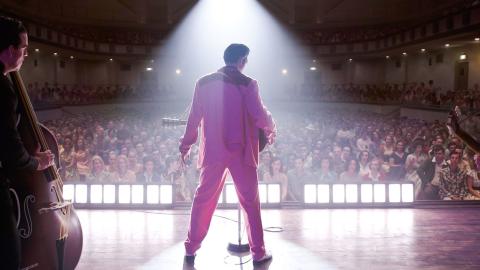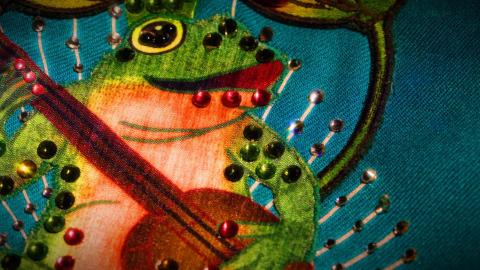
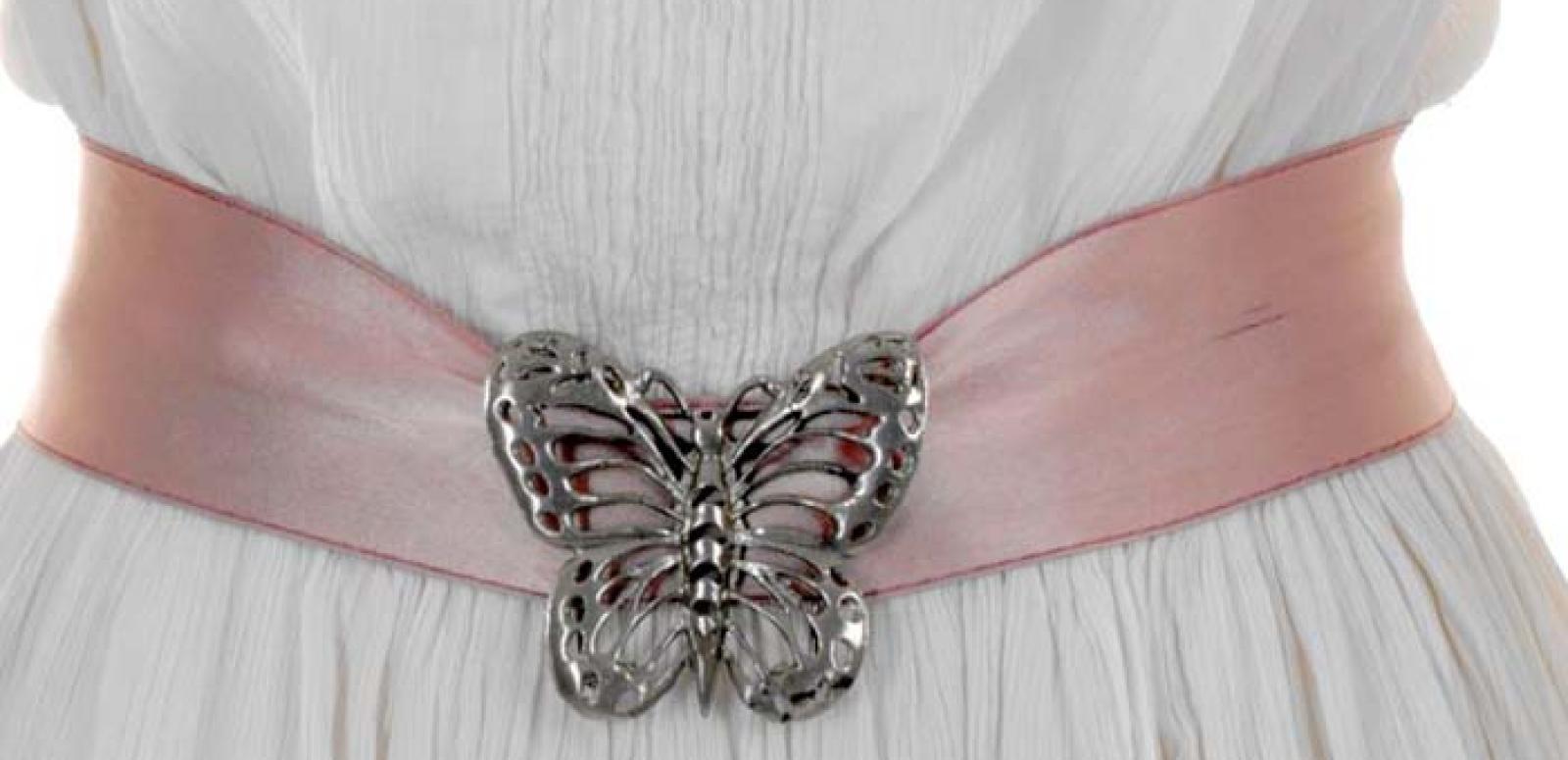
Picnic at Hanging Rock Costumes
Picnic costumes: the details in the dresses
NFSA curator Jenny Gall takes a close look at two of the costumes in Peter Weir's Picnic at Hanging Rock, released in Australia in 1975. They also feature in our online Picnic at Hanging Rock curated collection.
The NFSA collects costumes as evidence of the creative process of filmmaking. In presenting costumes from the collection online and in exhibition spaces, we seek to provide audiences with an understanding of how costumes create character, and to acknowledge the skilled teams who translate the designer’s vision into clothing that supports the film.
Miranda’s picnic dress – worn by Anne Louise Lambert
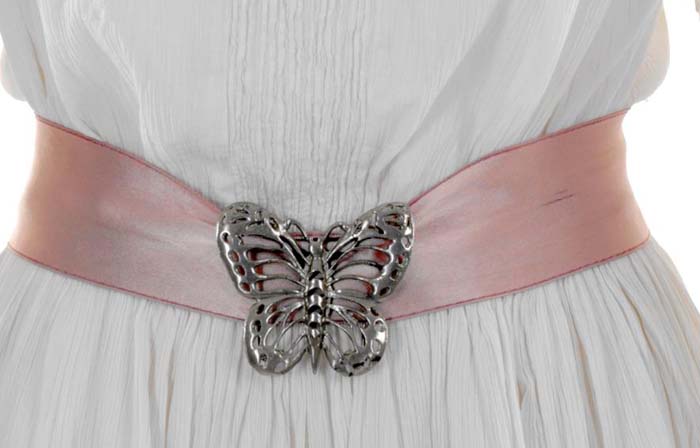
Butterfly buckle on Miranda’s dress
Textiles are among the most fragile of items in the NFSA collection which is why they are only rarely placed on display. The Picnic costumes were designed by Judith Dorsman; some were donated to the NFSA by Anne Louise Lambert, and others by producer Patricia Lovell.
Miranda’s favourite flower, the daisy, symbolises purity, joy and innocence. Pictured below is the recurring daisy motif which decorates the machine-made cotton lace trim on her dress’s neck and sleeves:
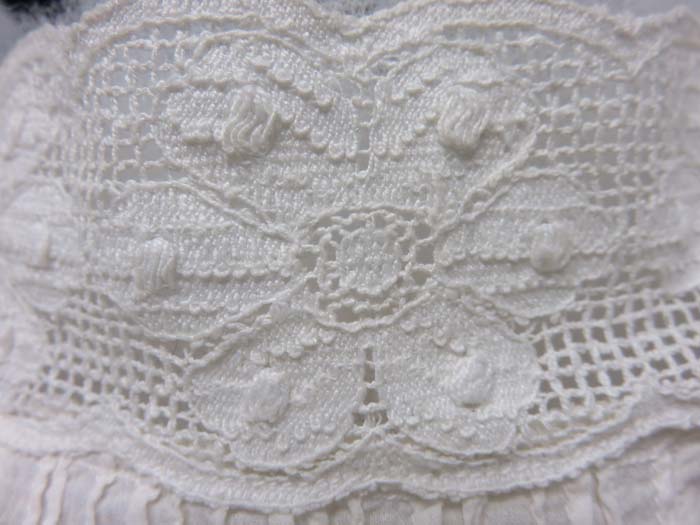
The central daisy in the lace collar
Lace – an openwork fabric of threads forming decorative designs – is a delicate tool used by costume designers to convey much about character. An abundance of frothy lace suggests wealth and ostentation; here, the restrained use of lace suggests otherwise. The dress’s lightness and movement in relation to the actress’s body create an image of transitory beauty.
Miranda’s dress is made of muslin – a loose weave fabric used for making garments worn in very hot or humid climates. Picnic was filmed on location in February 1975, during the harsh Australian summer. Rows of pintucks (very narrow ornamental tucks in a garment) sculpt the front of the dress and the delicate material is inset with the daisy motif lace:
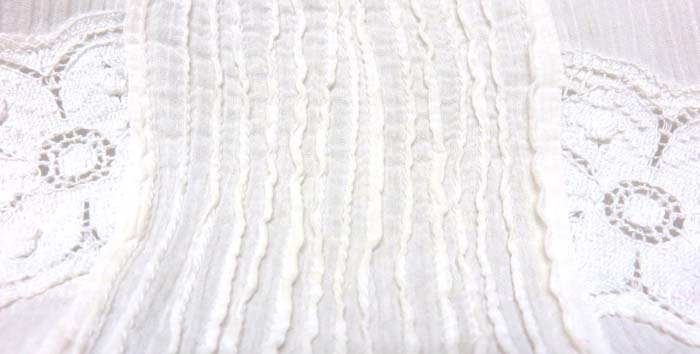
Pintucks and daisy lace inset
Multiple editions of costumes are usually prepared as a precaution against the physical damage to clothing worn on set, or to convey the sense of time passing through visible degradation of the fabric. Here, a tiny tear has been carefully repaired (see below). A shadowy mark made by contact with vegetation or earth is a reminder of the bush location where Picnic at Hanging Rock was filmed:
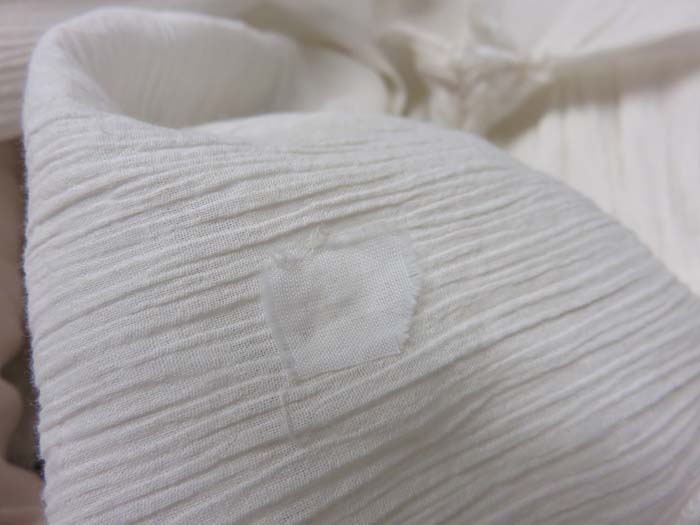
Reverse view of repair and faint stain
We carefully monitor these blemishes within our textile conservation plan at the NFSA.
Miranda’s petticoat – worn by Anne Louise Lambert
Anne Louise Lambert, when donating her costume to the NFSA, noted that the piece of lace that Michael hands to Albert after finding Irma alive at Hanging Rock was torn from this petticoat (below):
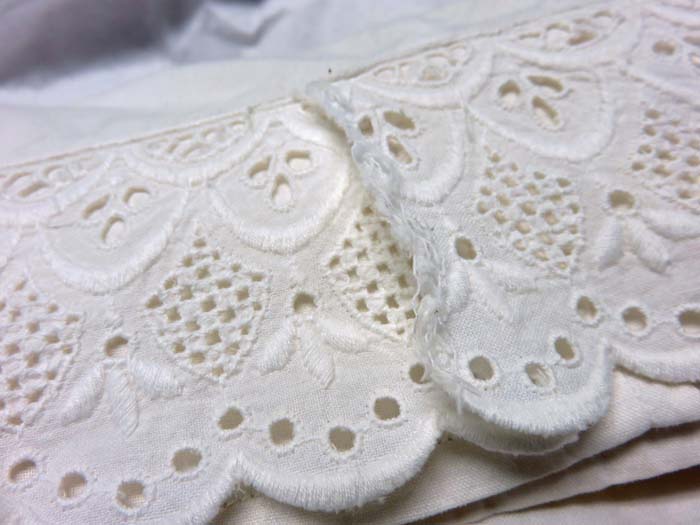
Lace border of petticoat with raw edge
The drawstring waist and buttons (below) recreate the authentic fastenings of the era:
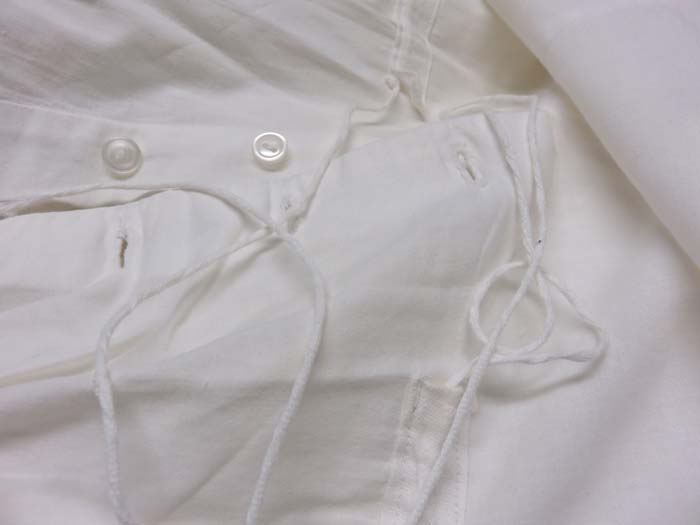
Petticoat drawstring
Mademoiselle’s picnic dress – worn by Helen Morse
Elegance underlies every feature of this beautiful cream Edwardian afternoon gown, and Helen Morse as Mademoiselle Dianne de Poitiers brought costume designer Judith Dorsman’s vision to life:
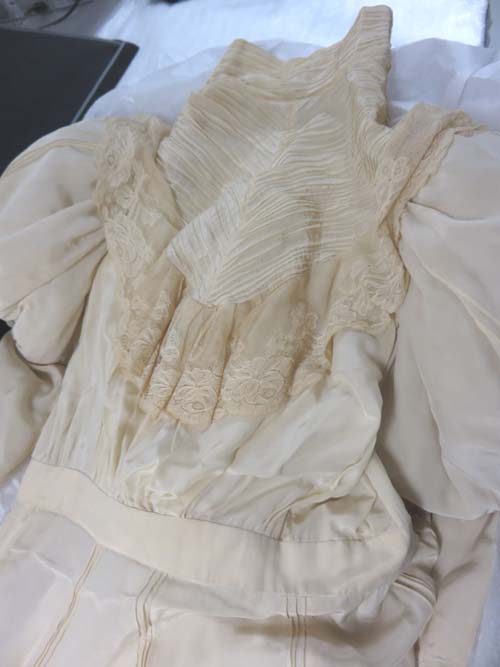
Fine pintucks, decorative lace and leg o’mutton sleeves
Silk was chosen for the garment; a luxurious, light fabric with a bewitching sheen and fluid drape that interacted with the distinctive lighting used to film the afternoon picnic scenes.
Corsetry was essential to create the hour-glass figure sought after by women at this time, and female actors on the set of Picnic were carefully equipped with the appropriate undergarments.
Mademoiselle’s strikingly stylised sleeves, tight waist and upright carriage, assisted by the authentic corset underneath her dress, ensure that she stands out as a representative of modern fashionable society. Her appearance is beautiful but, in the context of the Australian bush, absurd – marking her as an intruder in an ancient, natural environment.
You can see more details in the images below:
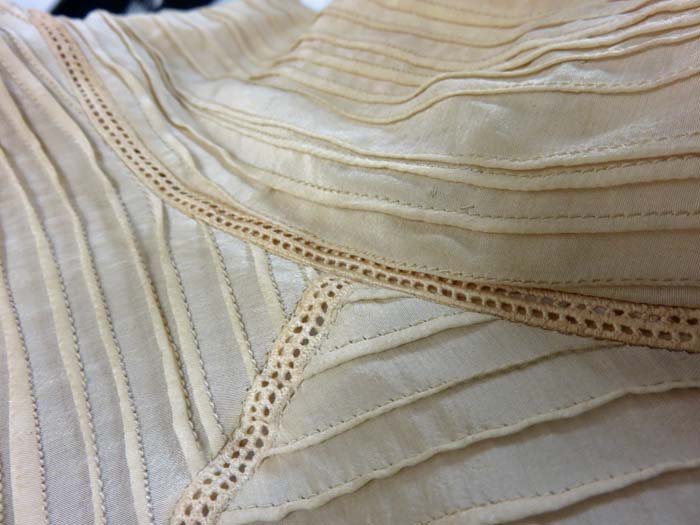
Detail of pintucks and inset seam on bodice and neckline
Internal view of bodice stitching
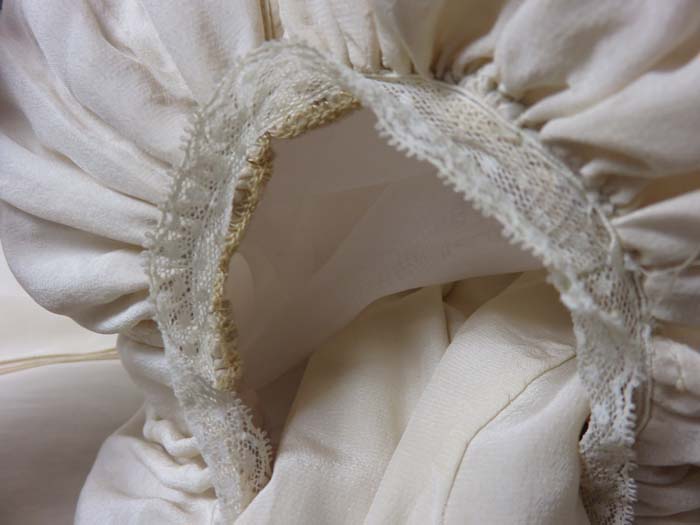
Padding inside leg o’mutton sleeve and long sleeve protruding from cotton lace trim
Long after the film has wrapped, the costumes retain the imprint of the actor’s body. This is both fascinating and concerning for holders of costume collections. Body sweat and the effects of interaction with the environment on set leave a chemical residue which must be monitored and treated when required. The visible evidence of the ageing process is shown in the deepening hue of the cream silk, and we carefully control each costume’s exposure to light during storage.
Miranda and Mademoiselle Dresses – Photo Gallery
In the gallery below, you can see photos of both dresses from different angles. Click on each image to enlarge.
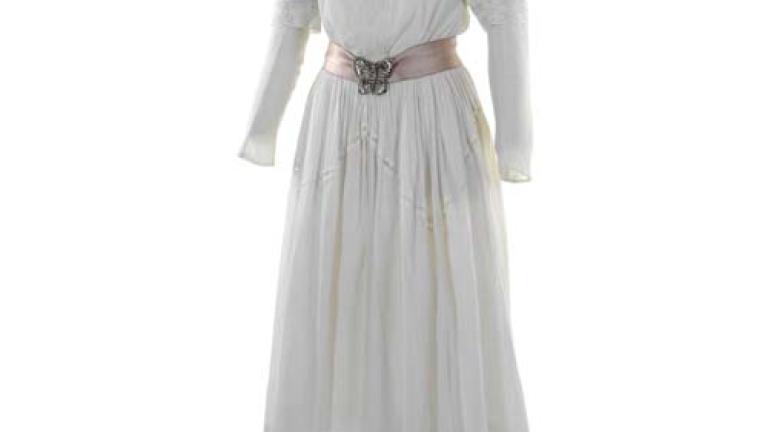
Picnic dress worn by Miranda (Anne Louise Lambert).
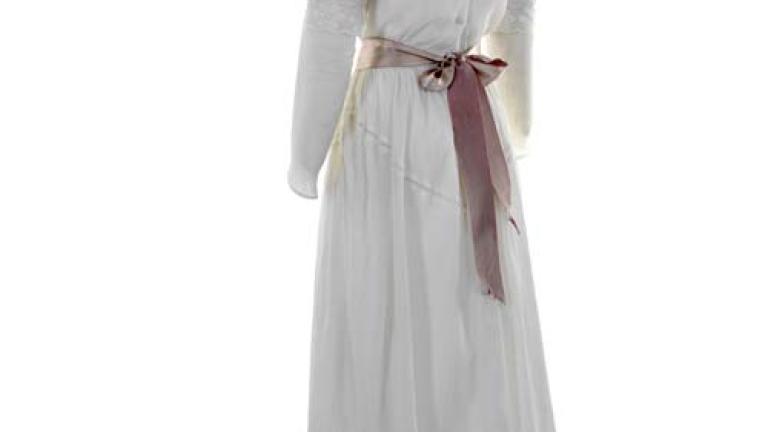
Picnic dress worn by Miranda (Anne Louise Lambert).
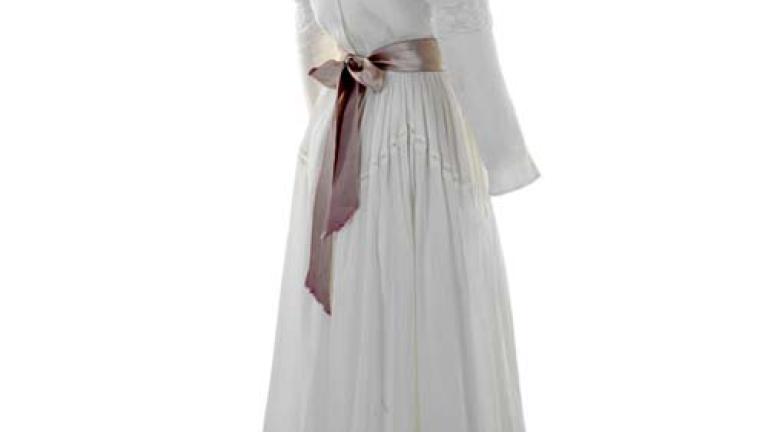
Picnic dress worn by Miranda (Anne Louise Lambert).
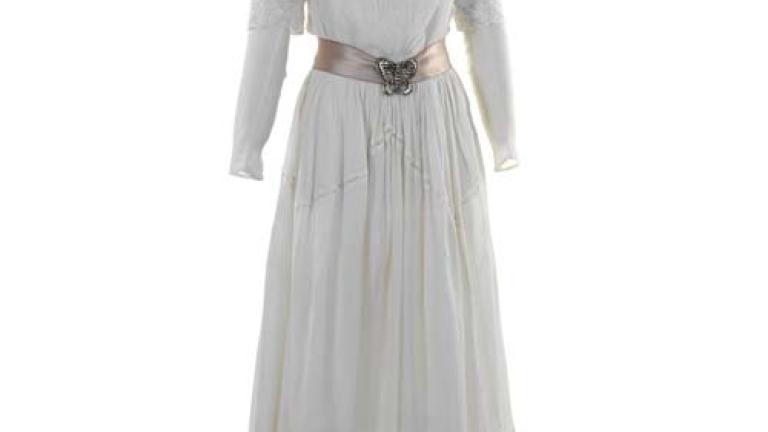
Picnic dress worn by Miranda (Anne Louise Lambert).
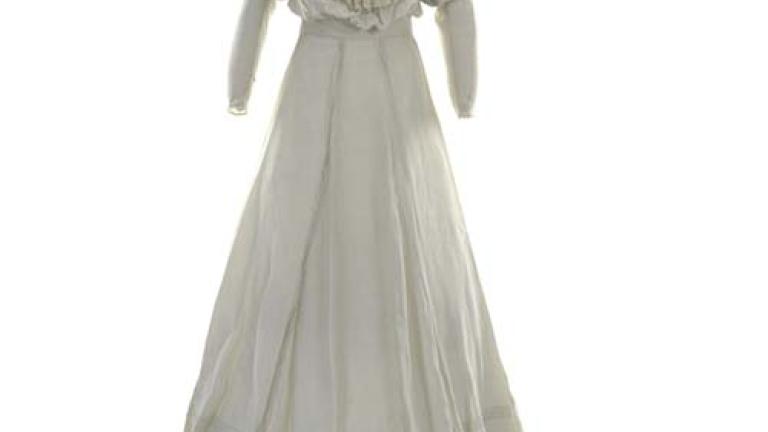
Silk picnic dress worn by Mademoiselle de Poitiers (Helen Morse).
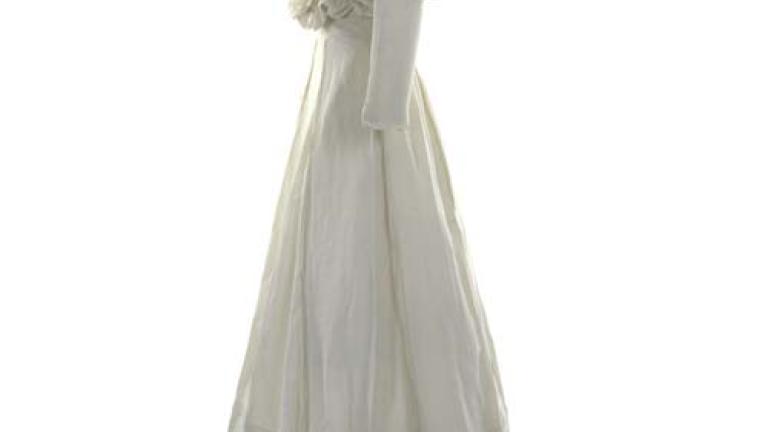
Silk picnic dress worn by Mademoiselle de Poitiers (Helen Morse).
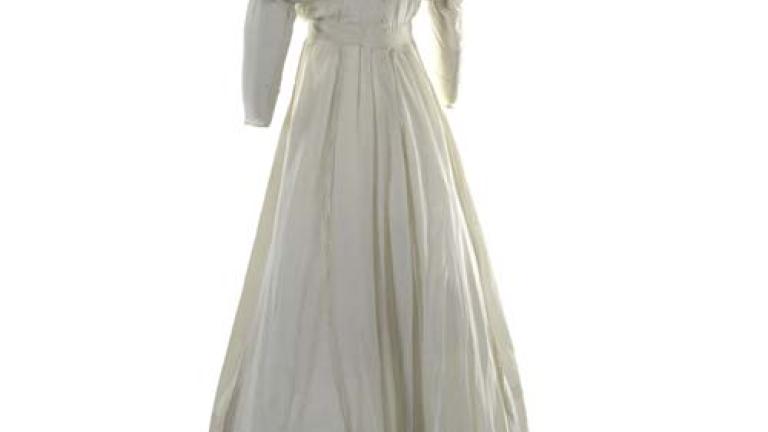
Silk picnic dress worn by Mademoiselle de Poitiers (Helen Morse).
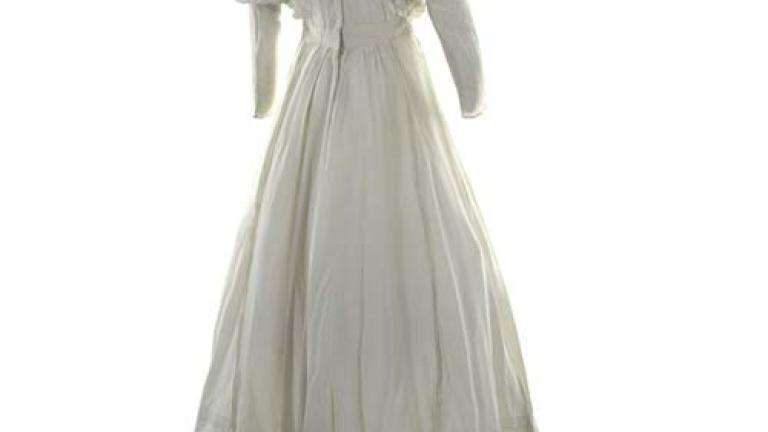
Silk picnic dress worn by Mademoiselle de Poitiers (Helen Morse).
You can read more about Edwardian fashion at the Victoria and Albert Museum website.
The National Film and Sound Archive of Australia acknowledges Australia’s Aboriginal and Torres Strait Islander peoples as the Traditional Custodians of the land on which we work and live and gives respect to their Elders both past and present.

